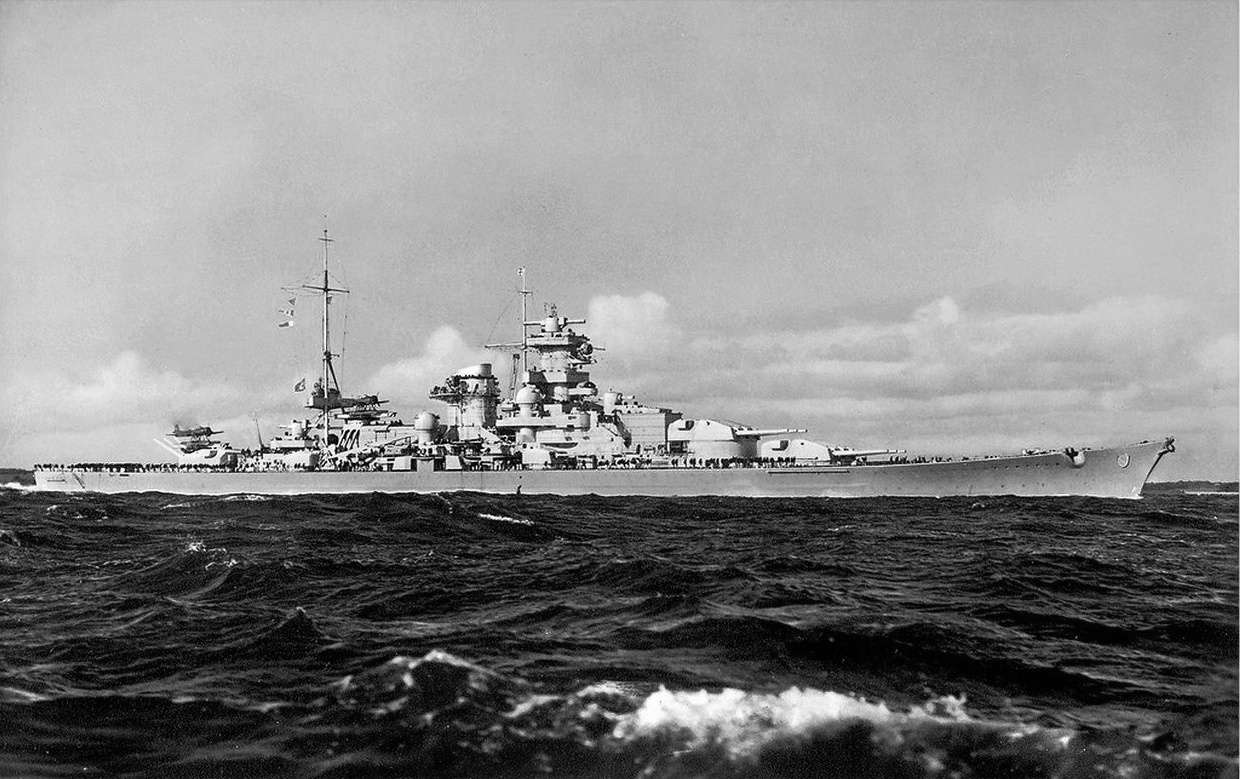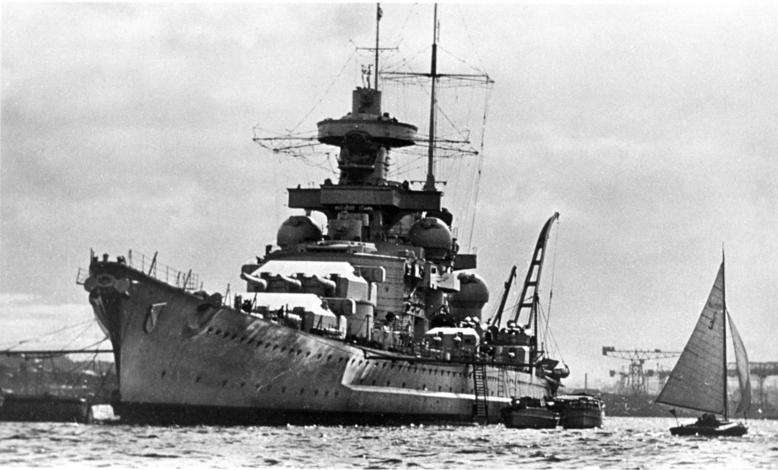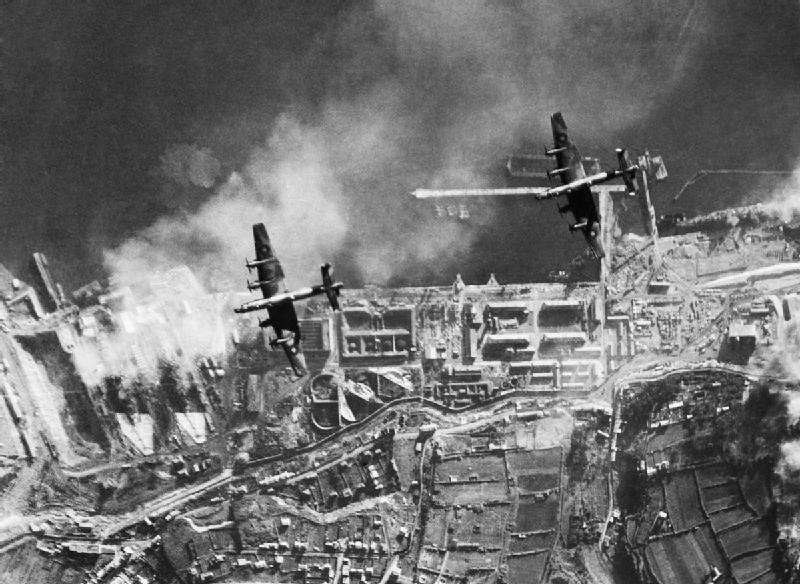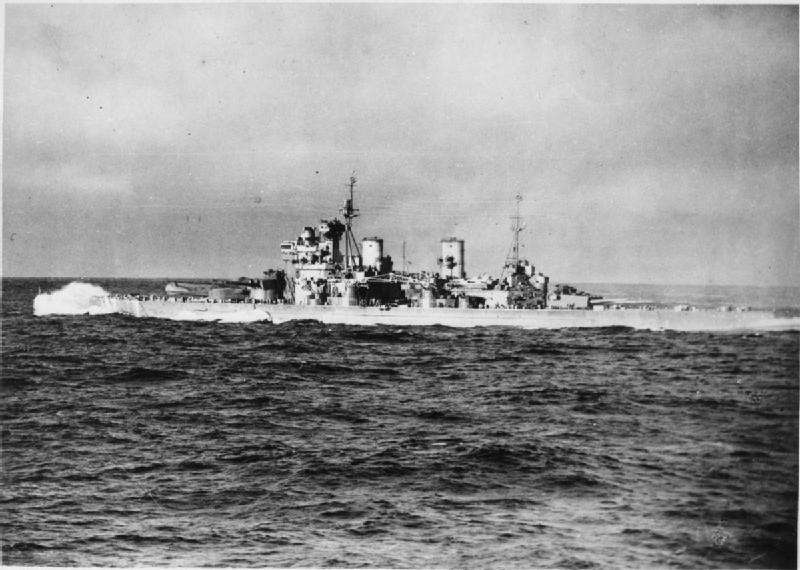The Scharnhorst was a key capital ship of the Kriegsmarine, during the Second World War, categorized variably as a battleship and battlecruiser due to its size, firepower, and speed.

Constructed at the Kriegsmarinewerft dockyard in Wilhelmshaven, the ship’s keel was laid down on 15 June 1935 and, following a period of a year and four months, it was launched on 3 October 1936, culminating in its completion in January 1939.
The Scharnhorst met her end in the Battle of the North Cape on December 26, 1943, where she was sunk by the Royal Navy.
Design
The Scharnhorst was born out of the strategic and political milieu of the mid-1930s. The Treaty of Versailles that ended World War I had imposed severe restrictions on German naval capabilities.
Germany, under the constraints of the treaty, was prohibited from constructing a navy that could pose a threat to its European neighbors.
Its naval strength was confined to six pre-dreadnought battleships, six light cruisers, twelve destroyers, and twelve torpedo boats, far from what was needed to be a dominant force at sea.
However, when Adolf Hitler came to power, Germany’s ambitions transcended these restrictions. In 1934, Hitler initiated a clandestine naval rearmament program that would eventually give rise to the formidable Kriegsmarine, or the German Navy.
As part of this program, the keel of the Scharnhorst was laid in 1935 at the Kriegsmarinewerft dockyard in Wilhelmshaven, marking the beginning of the construction of a new class of warships.
 Scharnhorst pictured in 1939. Image by Bundesarchiv CC BY-SA 3.0
Scharnhorst pictured in 1939. Image by Bundesarchiv CC BY-SA 3.0
The Scharnhorst-class battleships, which included the Scharnhorst and her sister ship, the Gneisenau, were designed to outperform the most powerful ships of Germany’s potential adversaries, particularly France and the United Kingdom.
The design sought to strike a balance between speed, armor, and firepower, three crucial aspects that determine the strength of a battleship.
Launched on October 3, 1936, the Scharnhorst was a testament to German engineering capabilities. The Scharnhorst was finally commissioned into the Kriegsmarine on January 7, 1939, standing ready to participate in the looming global conflict that would be World War II.
Technical Specifications
The Scharnhorst was laden with significant technical advancements. Among its most notable features was its size, being approximately 235 meters in length and a displacement of over 32,000 tons, and its formidable speed of over 31 knots. This made it one of the fastest battleships of its time, a noteworthy achievement given its size.
The speed was made possible by the ship’s power plant, which consisted of 12 high-pressure boilers and three geared turbines that generated an impressive 159,551 shaft horsepower.
This ability to combine size, power, and speed was unprecedented and was critical in shaping the Scharnhorst’s tactical roles.
The high speed allowed the ship to engage in “hit and run” tactics, where it could use its superior speed to close in on an enemy, unleash a devastating attack, and quickly retreat before the enemy could respond effectively.
 Scharnhorst in port, 1939. Image by Bundesarchiv CC BY-SA 3.0
Scharnhorst in port, 1939. Image by Bundesarchiv CC BY-SA 3.0
Another significant aspect of Scharnhorst’s design was its armament. It boasted nine 28 cm SK C/34 guns mounted in three triple turrets, two forward and one aft.
These guns, while not the largest in use at the time, were notable for their high rate of fire and excellent overall performance.
Additionally, the Scharnhorst was equipped with twelve 15 cm SK C/28 guns, sixteen 10.5 cm SK C/33 anti-aircraft guns, and numerous smaller anti-aircraft guns, providing it with a strong layered defensive capability against enemy aircraft.
This was particularly important during World War II, an era when air power began to play a more significant role in naval warfare.
Scharnhorst had an armor belt that was up to 350 mm thick, with a deck armor of up to 50 mm. This comprehensive armor scheme was designed to protect the ship from torpedoes, bombs, and enemy shellfire.
Innovation also extended to the Scharnhorst’s command and control capabilities. The ship was equipped with advanced (for the time) communication systems and fire-control systems, which improved the accuracy of its guns and enabled effective coordination with other German naval units.
Operational History
The Scharnhorst was commissioned into the Kriegsmarine, the navy of Nazi Germany, on January 7, 1939. Its first few months of service were marked by training and sea trials.
With the outbreak of World War II in September 1939, the Scharnhorst and her sister ship, Gneisenau, were mobilized to disrupt the flow of enemy shipping and project naval power for Germany.
The ship’s first significant combat engagement occurred during Operation Weserübung, the invasion of Norway in 1940.
In the course of this operation, Scharnhorst and Gneisenau, her sister ship, successfully sank the British aircraft carrier HMS Glorious and her two escort destroyers.
The destruction of the Glorious marked one of the few instances during World War II where battleships were able to sink an operational aircraft carrier.
 Two Handley Page Halifax carry out a daylight raid heading towards the drydock where Scharnhorst Gneisenau are berthed.
Two Handley Page Halifax carry out a daylight raid heading towards the drydock where Scharnhorst Gneisenau are berthed.
In 1941, the Scharnhorst and Gneisenau were involved in a major commerce raiding operation codenamed Operation Berlin.
This operation targeted Allied merchant shipping in the Atlantic Ocean, aiming to disrupt critical supply lines.
The mission was deemed a success, with the duo sinking or capturing 22 ships, amounting to over 115,000 gross register tons.
Perhaps the most daring and notable operation Scharnhorst participated in was Operation Cerberus in 1942, known as the Channel Dash.
The German ships, including Scharnhorst, Gneisenau, and heavy cruiser Prinz Eugen, had to navigate through the English Channel, one of the most heavily defended stretches of water in the world, to reach the safety of German ports.
Despite British efforts to intercept them, all the ships made it to Germany.
Sinking Of The Scharnhorst
The final and most tragic engagement for the Scharnhorst was the Battle of North Cape in December 1943.
This marked the end of one of the most formidable battleships in the Kriegsmarine, the German Navy, and had a huge effect on the balance of naval power in the Atlantic and Arctic Oceans.
In late 1943, the Scharnhorst was stationed in Norway, poised to intercept and disrupt the Arctic convoys that were supplying vital materials from the UK to the Soviet Union.
On December 25, Admiral Bruce Fraser, commander of the British Home Fleet, received intelligence about a potential sortie by the Scharnhorst.
The Scharnhorst, commanded by Captain Fritz Hintze, sailed from Altenfjord, Norway, in the early hours of December 26, 1943, accompanied by five destroyers.
Their target was Convoy JW55B, a convoy of British merchant ships bound for the Soviet Union.
Unknown to the Germans, Admiral Fraser had prepared an ambush with his force, which included the battleship HMS Duke of York and several cruisers and destroyers.
The Battle of the North Cape took place amidst heavy seas and poor visibility due to snow.
The initial engagement started with the British cruisers, led by HMS Belfast, which used radar to detect the Scharnhorst and fired star shells to illuminate the battleship and expose her position.
After heavy shelling from the cruisers, the Scharnhorst attempted to retreat but was intercepted by the Duke of York.
 British battleship HMS Duke of York.
British battleship HMS Duke of York.
The Duke of York’s guns inflicted heavy damage to the Scharnhorst, including disabling one of her boiler rooms, which reduced her speed considerably.
The Scharnhorst continued to fight, but she was surrounded by British warships and repeatedly hit.
At approximately 19:45, the Duke of York delivered a fatal salvo that damaged Scharnhorst’s forward turrets and caused a power failure.
The final blow came when British destroyers launched torpedoes, causing irreparable damage.
At around 19:50, the Scharnhorst sank beneath the icy waves of the Barents Sea. Of the almost 2,000 men aboard, only 36 were rescued by the British.
The destruction of the Scharnhorst marked a crucial victory for the Allies, effectively ending Germany’s surface naval threat in the North Atlantic and the Arctic.
Finding The Scharnhorst
Following the sinking of the Scharnhorst during the Battle of the North Cape in 1943, the wreck lay undisturbed at the bottom of the Barents Sea for several decades.
It was a somber underwater memorial to the nearly 2,000 sailors who had perished during that fateful battle.
The exact location of the wreck remained unknown for a long time due to the challenging conditions of the Barents Sea and the depth at which the ship had sunk.
It was not until 2000 that the wreck was finally located by a team from the Norwegian Petroleum Directorate, who were surveying the area for potential oil fields.
They identified a large object at a depth of approximately 290 meters (950 feet) that was consistent with the dimensions of the Scharnhorst.
In 2019, an expedition led by the Alfred Wegener Institute for Polar and Marine Research conducted a detailed survey of the wreck using advanced underwater robotic technology.
The expedition captured high-resolution images and video footage of the wreck, revealing the battered remnants of the Scharnhorst in astonishing detail.
Today, the wreck of the Scharnhorst is considered a war grave and is protected by international law. As such, it is illegal to disturb the site or remove any items from it.
Where Is The Scharnhorst Now?
The wreck of the Scharnhorst – a World War One German armored cruiser – is currently located off the Falkland Islands.
It is still there since it was sunk 105 years ago by the British navy.
The discovery of the wreck provides a historical reminder of the naval battles that took place during World War One.





